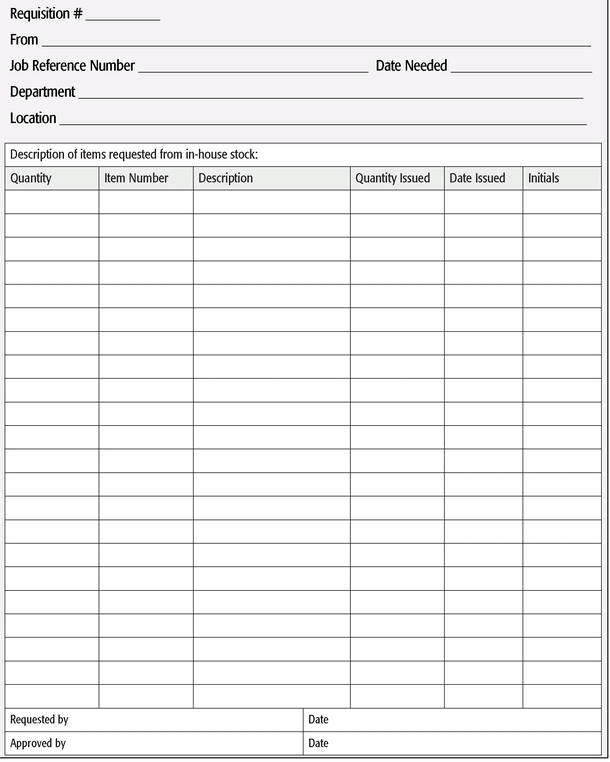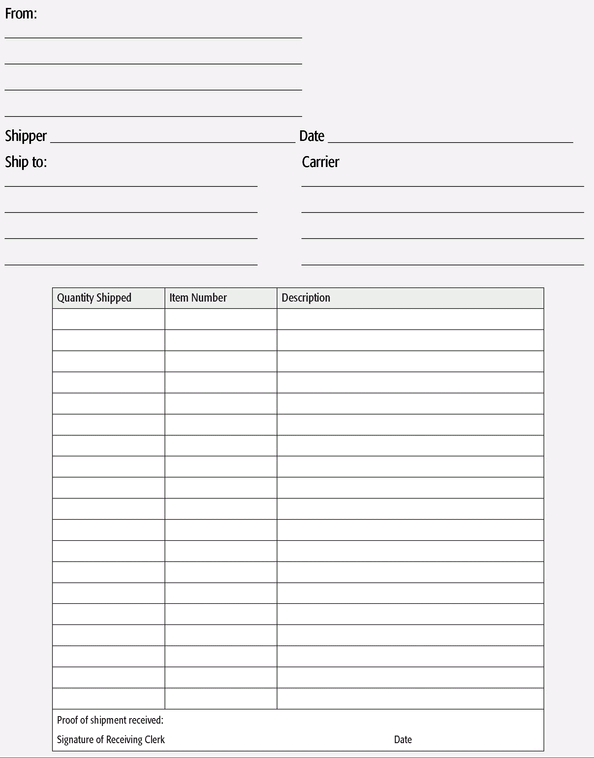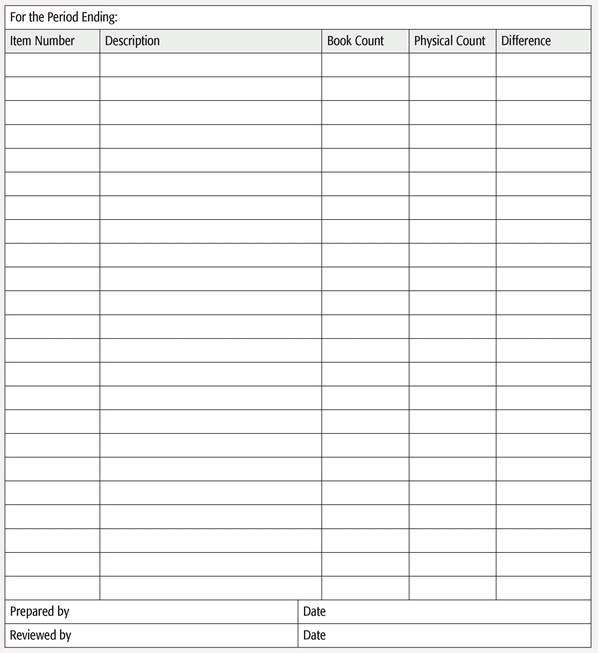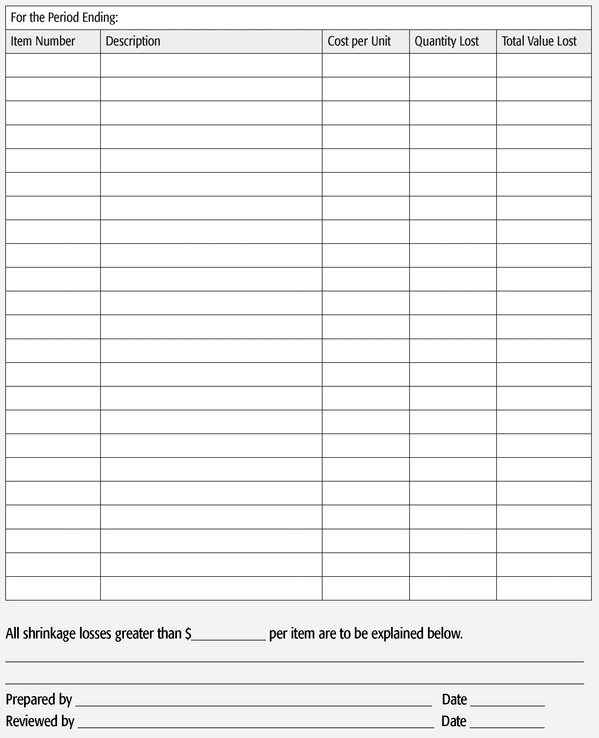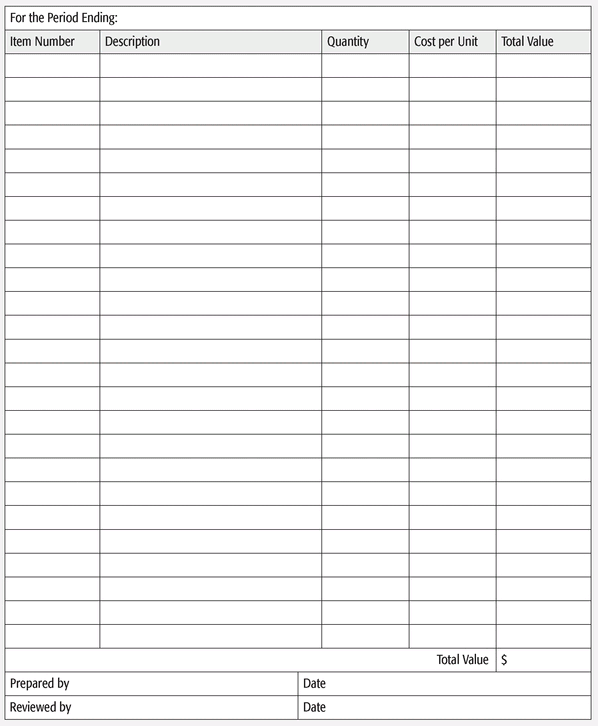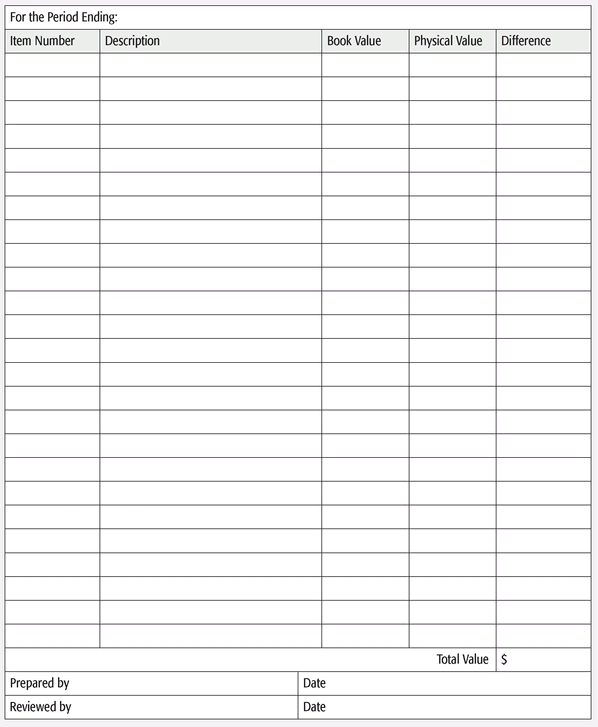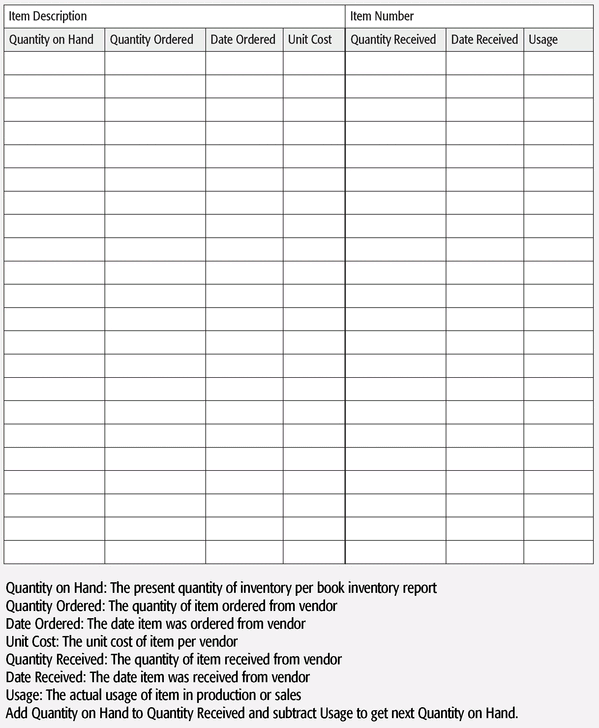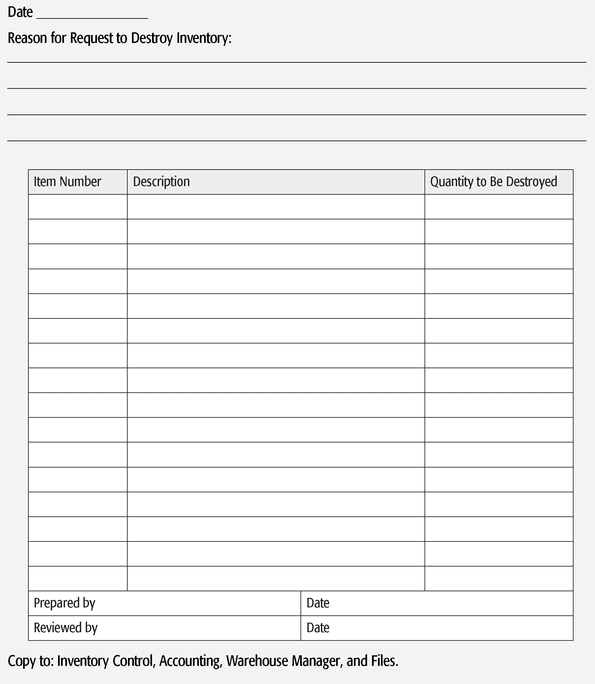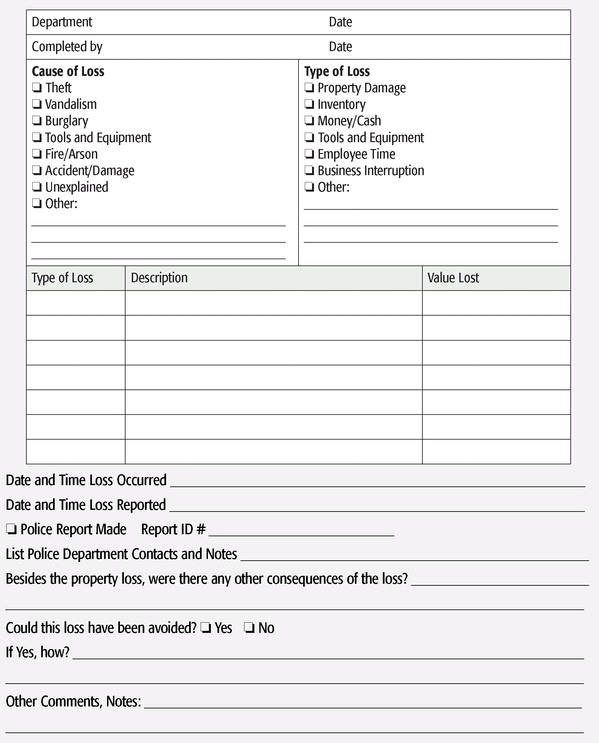CHAPTER 12
Inventory Movement and Valuation Tools
THIS CHAPTER GUIDES YOU IN MANAGING and evaluating your inventory. Maintaining the accuracy and integrity of your inventory system is important, but so are identifying and correcting all causes of variances.
Use the In-House Stock Requisition form to request inventory internally. This form serves as a written record of both the request and the delivery from inventory. When you ship goods to a customer, you should accompany the goods with a Shipping Verification. Request that a signed copy of the Shipping Verification be returned to you and instruct your carrier to secure a signed copy on your behalf. This document serves as your proof of delivery of the shipment.
Use the Physical Inventory Count Sheet when performing a physical count of your inventory. The Physical Inventory Gain or Loss form enables you to track inaccuracies and shrinkage to your inventory by comparing your book count—the amount of inventory shown in your records—and your physical count—the amount of inventory shown by an inspection.
Substantial differences between book count and physical count can mean poor recordkeeping, entry errors, and, in some cases, employee theft. The Raw Material Shrinkage Report helps calculate and track losses due to shrinkage of inventory. This tool can help you pinpoint problem areas.
The Physical Inventory Valuation Report determines your total physical inventory value. Simply enter the quantity of each item based on a physical inventory count and multiply the quantity by the cost per unit to determine the value. The Book Inventory Valuation Report works the same way as the Physical Inventory Valuation Report, except that you use the book count of inventory. The advantage of the Book Inventory Valuation Report is that it doesn’t require a full physical inventory count. The obvious disadvantage, however, is that book inventory counts are typically less accurate than physical inventory counts. The Physical vs. Book Inventory Cost Variance Report reveals the differences between the book value and the physical value of your inventory.
The Inventory Status Sheet helps you maintain an accurate physical count of individual items. Use the Authorization to Destroy Inventory to secure approval before disposing of inventory and to notify appropriate personal of the inventory change. Use the Property Loss Report whenever your business suffers a loss to its inventory or property. Be sure to fill the form out completely and as soon as possible after the loss. A promptly completed Property Loss Report will carry more evidentiary weight with insurance adjusters.
124. In-House Stock Requisition
125. Shipping Verification
126. Physical Inventory Count Sheet
127. Physical Inventory Gain or Loss
128. Raw Material Shrinkage Report
129. Physical Inventory Valuation Report
130. Book Inventory Valuation Report
131. Physical vs. Book Inventory Cost Variance Report
132. Inventory Status Sheet
133. Authorization to Destroy Inventory
134. Property Loss Report
